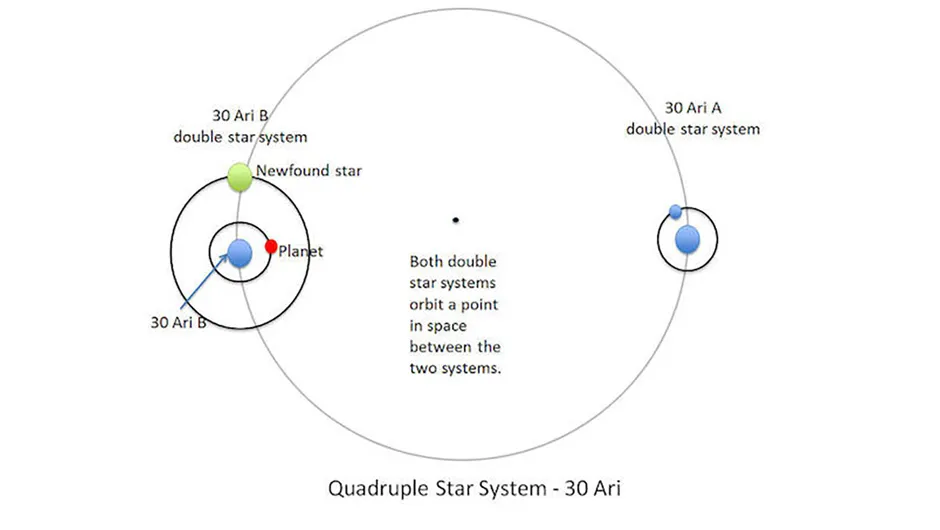An exoplanet that was discovered by astronomers at Germany's Karl Schwarzschild Observatory in 2009 has turned out to be more interesting than was previously thought.
New observations have revealed the planet is actually housed within a quadruple star system.
It is the second planet known to exist within such a system.
Lying some 136 lightyears from Earth in the constellation of Aries, 30 Arietis Bb is a gas giant planet with 10 times the mass of Jupiter.
It orbits its parent star 30 Arietis B every 335 days, at a distance of roughly 1 AU.
30 Arietis B itself is an F-type main sequence star that forms part of 30 Arietis, which was until recently believed to be a triple-star system comprising 30 Arietis B and its companions 30 Arietis A, a double star that lies some 1,500 AU from its counterpart.
Now, however, a fourth star has been identified in the 30 Arietis system - a red dwarf companion to 30 Arietis B.
Confused?
This diagram should help…

The red dwarf was discovered by a team working at the Palomar Observatory in California, who were making use of two new 'adaptive optics' technologies, which compensate for the blurring effects of Earth's atmosphere.
The systems in question were Robo-AO, developed at the University of Hawaii, and PALM-3000, developed at JPL-Caltech.
"The discovery of this exciting system is only possible when we quickly scan through large numbers of potential targets,” said Dr Cristoph Baranec of the University of Hawaii at Manoa's Institute For Astronomy.“
At the moment, Robo-AO is the only instrument that can give us the necessary combination of resolution and efficiency.
Once we discover something interesting with Robo-AO, we can follow up with the ‘Formula 1’ systems, like PALM-3000 or the SCExAO system at the Subaru Telescope in Hawaii, to obtain the absolute sharpest images possible."
The discovery is significant for two reasons.
Firstly, the discovery of a second 'four-star' exoplanet suggests that such planets may be more common than was thought, given that up to four per cent of solar-type stars are in quadruple systems.
Secondly, it's thought that the very existence of 'hot Jupiters' like 30 Arietis B may be explained by the gravity of a companion nudging them closer to their parent star.
